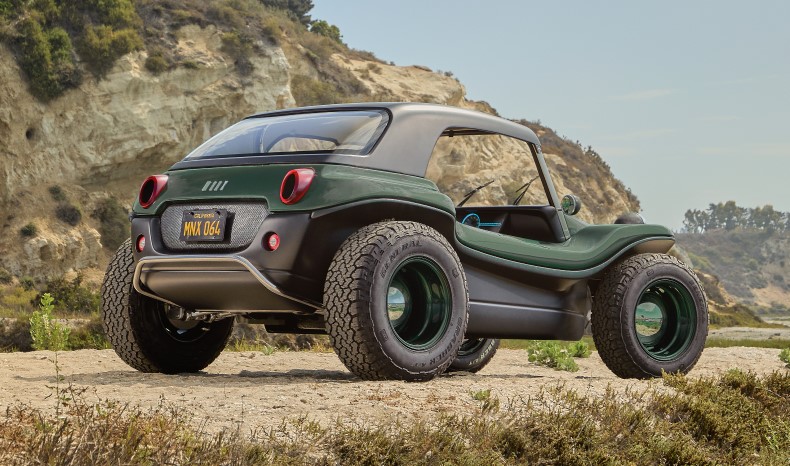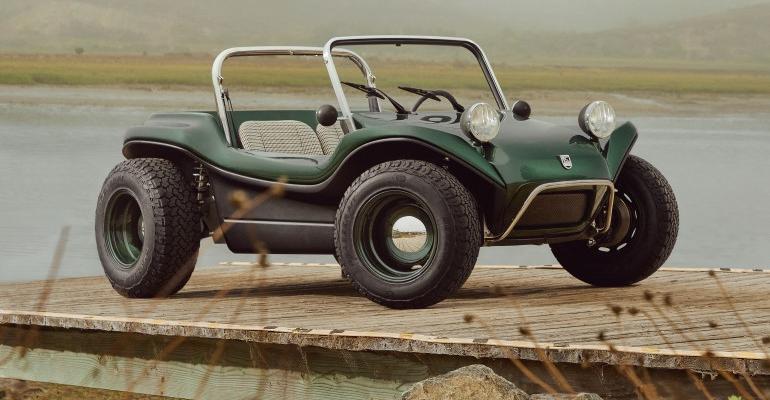MALIBU, CA – Back in its heyday in the mid-1960s, the Meyers Manx beach buggy was an icon of Southern California culture. Developed by the late Bruce Meyers, an engineer, artist and boat builder, the original Manx was powered by an air-cooled Volkswagen engine with a maximum of 48 hp and 62 lb.-ft. (84 Nm) of torque.
Meyers was quoted as saying of his creation, “Form was fun. Big wheels on small cars, no doors.”
The open-sided fiberglass body made the Manx instantly recognizable – and easily copied. There is an estimate that more than 300,000 dune buggy-style cars worldwide are cruising around, the majority of them being non-licensed Meyers Manx knock-offs.
That hasn’t deterred the creation of the ’24 Meyers Manx 2.0 by Philip Sarofim, a venture capitalist who acquired the Meyers Manx brand just before Meyers’ death in 2021. Freeman Thomas, known for his work on the design teams for Porsche 959, Audi TT, the VW New Beetle and Chrysler 300, joined as chief designer and company CEO and created styling true to the original Manx while evolving it for the 21st century.
The Thomas-designed ’24 Meyers Manx 2.0 is a 202-hp, 240-lb.-ft. (325-Nm) all-electric, aluminum monocoque two-seater engineered for cruising the Pacific Coast Highway while also having the necessary cred to tackle dirt and sand. As a pure BEV, it already meets California’s 2035 emission laws.
At 123.5 ins. (3,137 mm) long with an 82-in. (2,083-mm) wheelbase, the new Manx is about 11 ins. (279 mm) longer with a 2.0-in. (51-mm) longer wheelbase compared with the original. At 70.3 ins. (1,786 mm) wide and 53.3 ins. (1,354 mm) tall, the new buggy is a bit wider and similar in height to its predecessor. No ground clearance has been released.
The new Manx shares a rear-wheel-drive design with the original, but the Manx 2.0 employs a motor at each rear wheel to provide precise control, the company says. The motors, inverter, gearing and brakes for each rear wheel are housed in a single unit.
Pouch-style lithium-ion batteries – 20 kWh or 40 kWh – are mounted ahead of the rear axle to provide good chassis balance. Independent suspension, four-wheel disc brakes and regenerative braking propel the new Manx light years ahead of its predecessor.
Range is estimated at 150-300 miles (241-483 km) depending on battery size, with recharging via a 6-kW onboard charger or an available 60-kW DC fast charger.
One of the biggest surprises, given the heft of the batteries, is that both old and new weigh in at about 1,500 lbs. (680 kg), 1,650 lbs. (748 kg) for the electric Manx with the larger battery pack. The company says the Manx 2.0 with the larger battery pack hits 60 mph (97 km/h) in 4.5 seconds.
Meyers Manx will release 50 launch vehicles in 2023, with beta program customers providing feedback as the development team gets ready for full production in 2024.






